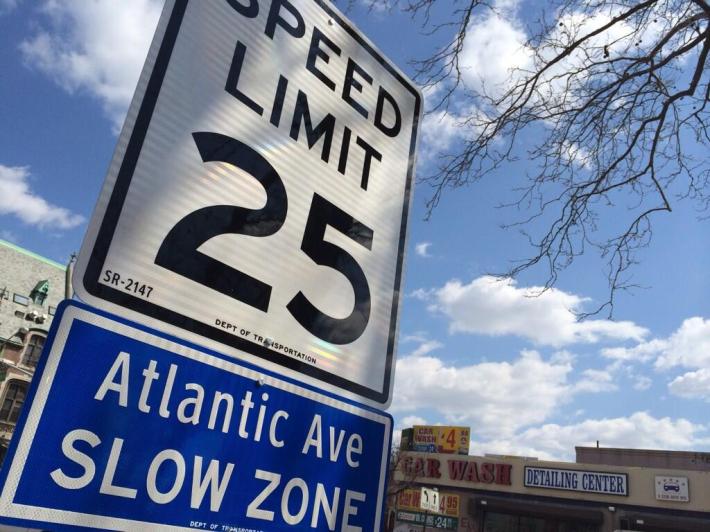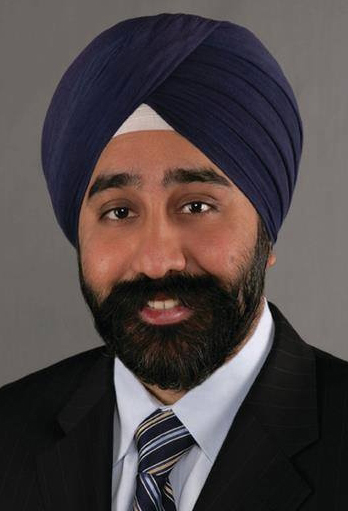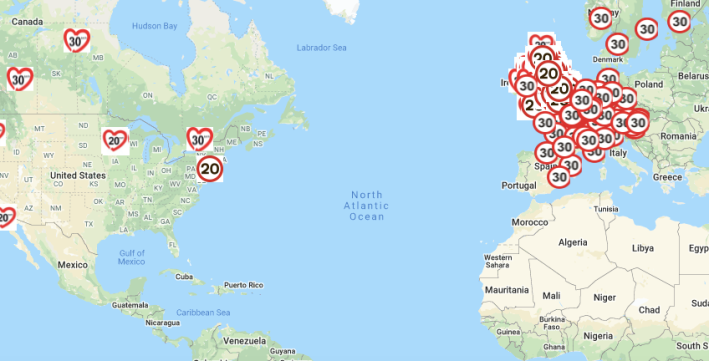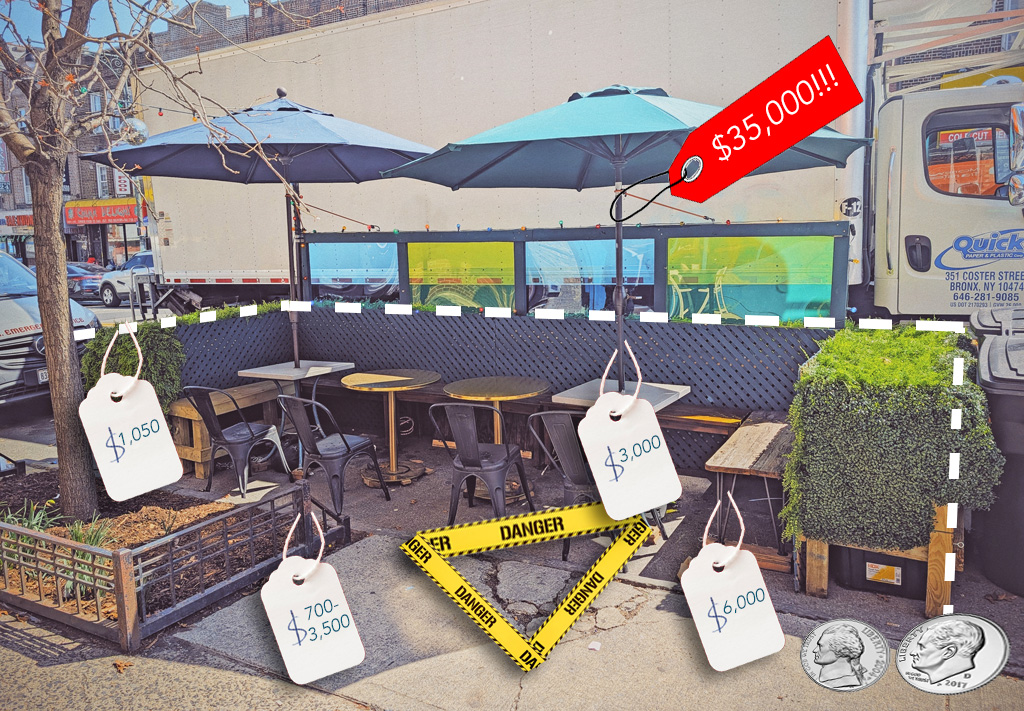Hoboken leads, New York City bleeds.
Mayor Ravi Bhalla of the mile-square suburb to the west of the city is moving ahead with a plan to cap speeds at 20 miles an hour — a move that has saved lives all over the world, yet is rarely deployed on America's deadly streets.
"For us, Vision Zero is not just eliminating pedestrian and cyclist deaths, but reducing injuries to zero, too," Bhalla told Streetsblog this week. "The reduction in speed limit is a critical component of that."
Bhalla had made the ambitious proposal as part of his State of the City address late last month and followed up with tweets reminding his constituents that people struck by cars traveling 30 miles per hour are four times more likely to die than if they are hit by a vehicle traveling 20 miles per hour. The measure will be turned into a piece of legislation later this year, the mayor said.
3. Move forward w/ Vision Zero to eliminate all fatalities/injuries on our streets by 2030. This includes studying feasibility of reducing city speed limit to 20mph. Someone struck by vehicle traveling 30mph is 4X more likely to die than at 20mph. An extra minute can save a life pic.twitter.com/wzmfKLclkW
— Ravinder S. Bhalla (@RaviBhalla) January 28, 2020
The fact remains: 20 miles per hour is still way too fast for most narrow residential streets, such as those in Hoboken or in virtually all of New York City's residential communities.
"There is no reason to be driving faster than 20 miles per hour on any street in our city," Bhalla said. "We will study this, but I think we will find that on the narrower streets, even 20 is too fast. I personally always drive very slowly. I find it dangerous to drive even at the legal limit on our smaller streets. Our current speed limit, 25, is too high."

But 25 is the default speed limit in New York City — and it was considered a major achievement when Mayor de Blasio joined Transportation Alternatives and Families for Safe Streets in getting it reduced from 30 in 2014. But since that law went into effect, there have been 1,163,865 reported crashes in New York City, injuring 23,949 cyclists and 57,238 pedestrians (43 people per day!) — numbers that would be significantly lower if the speed limit was reduced further.
New York does have several hundred 20-mile-per-hour zones near city schools [PDF], but there are more than 6,000 miles of streets in the five boroughs and hundreds of streets where speed limits could be further reduced without Albany approval. (Bhalla does not need state approval to reduce his 50,000-person city's speed limit from 25 to 20.)
And lest we forget: in New York City, speed cameras do not issue tickets unless a driver is exceeding the speed limit by 11 miles per hour or more — meaning tens of thousands of drivers are routinely traveling at 35 miles per hour on local streets without being held accountable for their recklessness.

But Bhalla is leading by example. Since beginning his city's Vision Zero effort last year, pedestrian collisions dropped from 65 in 2018 to 54 last year, and cyclist collisions dropped from 46 to 35. No pedestrians or cyclists have died in Hoboken in two years.
That's why Bhalla is convinced his "20 is plenty" initiative will be received warmly in the home of Sinatra.
"I haven't heard any credible pushback because the majority of Hoboken residents walk, bike or take transit," he said. "And people know that going from 30 to 20 makes a monumental difference. It may take just a minute more to drive somewhere, but if it saves a life, it's worth it."
Hoboken is the first large town or city in our region to move ahead with a 20 mile-per-hour limit, but Cambridge, Massachusetts reduced its speed limit to 20 last year. Still, a map posted by the 20 is Plenty campaign shows that reduced speed limits are in place widely across the world.







